In the hit film "Hustlers," Jennifer Lopez plays a pole-dancing stripper in the 1980s who dazzles her big-spender audiences with a flashy display of aerial choreography. On YouTube, a behind-the-scenes video of the superstar actress-dancer mastering the pole tells a different tale, one of sore muscles and nasty bruises and practice, practice, practice. To put it another way, if you think those moves are easy, you must train with the Cirque du Soleil.
Fortunately, Lopez didn't have to go as far to find a coach as she might have in the '80s. Inspired by feats being performed in night clubs, the idea of pole dancing as an art form and exercise had—and has—become incredibly popular. Over the past 20 years, what's known as "pole fitness" has grown so widely that it now occupies its own branch of the fitness industry, complete with equipment, wardrobe and gear markets, certified trainers, and competitions taking place worldwide. Lopez had her pick of celebrity trainers, working with Cirque du Soleil veteran Johanna Sapakie, but really, she could have gone to any city and Googled "pole dance studio" to find quality instruction.
What does it take to get proficient "on the pole," and what are the benefits if you decide to accept this adventurous fitness challenge? Here's what you need to know to grab on and start spinning.
Pole Fitness Is Serious Exercise
Stripper lore notwithstanding, pole dancing traces its roots to the ancient Indian sport of mallakhamb, in which gymnasts perform intricate poses and feats of strength on a vertical pole. Its ancestry also includes Chinese pole acrobatics, a staple of circus acts the world over.
In pole fitness, the pole itself is 40 millimeters in diameter or thicker and can be static or spinning (most of today's models typically can be set either way.) But in either case, you're usually spinning on the pole, and the result is a full-body workout unlike anything you've experienced.
"Thanks to pole fitness, I'm in the best shape of my life, " says online coach and Bodybuilding.com athlete Dr. Sara Solomon. "Pole involves climbing the pole, inverting, spinning, and dancing. It is a legit fitness program that focuses on strength and flexibility—especially upper-body strength.
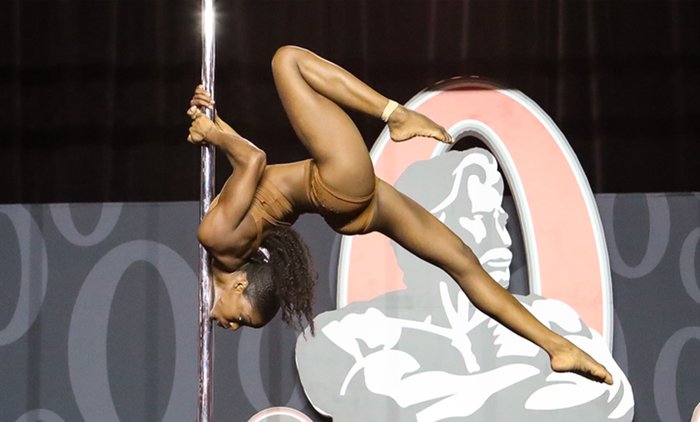
As an organized sport, pole fitness now shares the stage with professional bodybuilding, fitness, figure, and bikini contests.
Pole fitness offers myriad benefits, both physical and psychological, says Solomon, who became a passionate advocate after learning pole for a fitness-certification program.
"It can help you lose weight and build strength, mobility, and endurance, and there are aerobic perks," she says.
Solomon points to a 2019 study, in which researchers determined that a 60-minute advanced-level pole-dancing class can be classified as moderate-intensity cardiorespiratory exercise.[1]
Pole's Spreading Popularity
The contradiction between this exacting physical discipline and its seedy origin story just may be the key to its popularity. The required training and skills attract athletes looking for a new challenge, but the added kick of being able to merge the athletic with the sexy is an allure for many women.
Approaches to pole run from unabashedly erotic styles to those that downplay the exotic aspects and leave out the "pleasers," a popular brand of 6-8-inch platform heels worn by many practitioners. At the far end of the athletic spectrum are various aerial pole acrobatics, which eliminate the dancing aspect and focus on athletics.
But make no mistake: All versions are extremely difficult.
"This is just as hard as anything I've ever learned," says Lopez, a lifelong professional dancer and performer. And all variations seem to ignite a passion in their practitioners that burns beyond just love of getting a good sweat on.
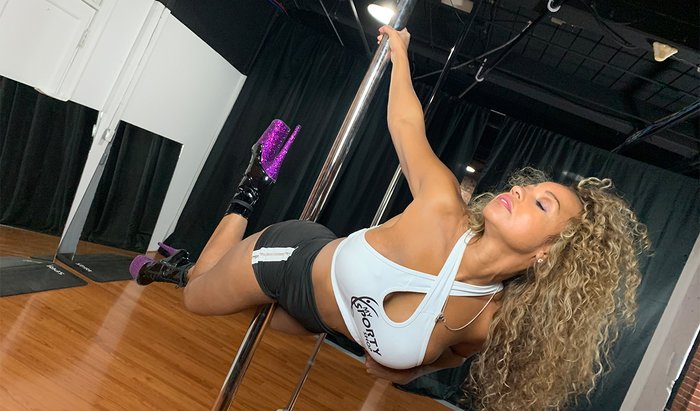
Amanda Eva Cumberbatch grew so enamored of pole fitness that she opened her own studio.
"Pole allows you to build a completely different type of relationship with yourself," observes Amanda Eva Cumberbatch, owner of Soul Pole Dance and Fitness studio in Springfield Massachusetts. "You get to know your body better, and you engage parts of your body you didn't know existed. You learn to breathe into movements, into simple and complicated tricks, twisting and turning to create beautiful, mesmerizing shapes. In doing that, you also become stronger. "
"It helps you feel comfortable in your skin, it boosts your confidence, it's sexually liberating, and it makes you feel empowered," adds Solomon.
Is Pole Fitness for You?
"Anyone can do pole!" declares Fitness Olympia legend Oksana Grishina, who famously took up pole for her fitness routine in 2014 and was inspired to start promoting pole fitness competitions. "You can take it easier, or you can go far and do some amazing tricks inspired by circus performers, but it's for everyone."
Says Cumberbatch, "I have seen everyone from beginners who have never worked out to the fittest of people trying a pole class for the first time. Everyone struggles in their own way in the beginning."
But there's no denying that to the inexperienced, pole fitness looks daunting to start. So how hard is it for beginners?
"That will depend on your baseline strength and mobility," Solomon says. "If you have a background in gymnastics and dance, you will learn faster than someone without those skills."
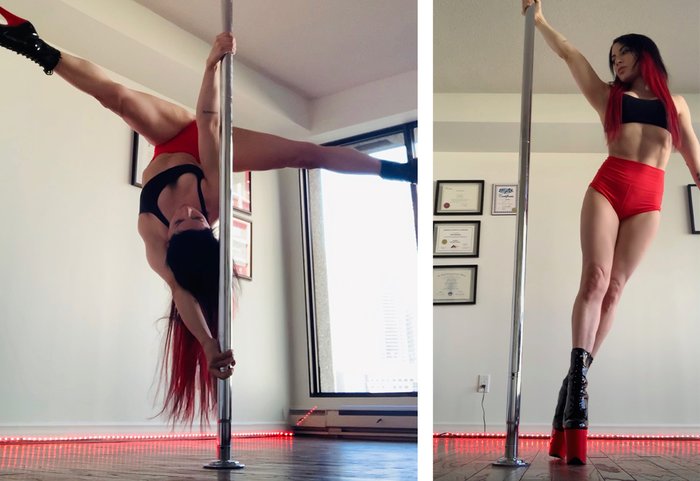
Pole fitness has helped Dr. Sara Solomon reach new heights of strength and athleticism in her 40s.
Even so, she says, you don't have to be in shape or super strong to see progress and benefit from pole fitness. You will gain strength and get fit over time.
Cumberbatch, a former figure competitor, says she was in terrible condition when she started.
"I could not even touch my toes. I had no shoulder, back, or hip flexibility," she recalls. "My core was weaker than I had ever imagined despite me having abs that easily 'pop out.' I struggled through pretty much every warm-up in every class I took."
Age is not a factor either, the experts say. Cumberbatch was 42 when she began learning pole. Solomon and Grishina, too, were close to 40, and Lopez was 50.
"I have seen young kids doing the most amazing moves on poles as well as women who are older than me who are just starting out," Cumberbatch says. "We found that most interest comes from people who currently hold regular 9-5 jobs and going to a pole class is something that they would definitely invest the time to do. Exotic Dance classes are also highly sought after."
Which Type of Pole Fitness Is Right for Me?
Solomon identifies three main branches of pole dancing: acrobatic-focused, dance-focused, and sensual. Only the sensual styles require heels, and within that category you'll find at least three different approaches: "exotic," "stripper," and "classique."
"The 'exotic style' is very technical and is associated with Russian pole dancing. It is well-known for handstands, crazy transitions, and deceptive strength moves," Solomon says. "The 'stripper style' focuses less on the tricks and more on raw sexuality. Prepare for twerking, heel clacks, lots of self-touching, and clothing removal. 'Classique' focuses on fluidity and flexibility, with splits, beautiful shapes on the spin pole, and seductive movements."
Fitness champ Grishina promotes a strictly gymnastics style of pole work through her OG Pole Fitness Classic competitions, and likes to describe her vision of pole as "a combination of strength, power, and art at the same time." Solomon, who practices Russian exotic style, is drawn to the blending of physical, sensual, and artistic elements.
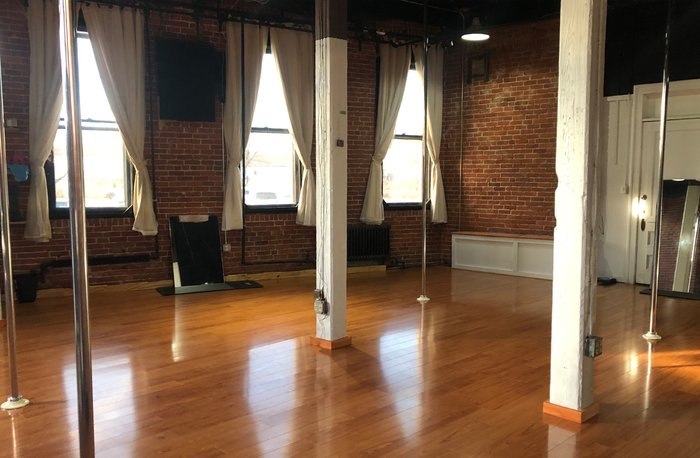
"Pole dancing requires a level of comfort with expressing sexuality, something that society has programmed women to feel ashamed of," she says. "It has helped improve my self-confidence and develop a deeper connection with my own body, both physically and spiritually."
Even so, she admits she had to get past her own pre-conceptions before she could climb into a pair of 8-inch Pleasers.
"Despite its rapid growth, pole still has an image problem because it originated in strip clubs," she says. "Furthermore, you need bare skin to grip the pole—legs, arms, and stomach exposed—so skimpy attire is a prerequisite. And the 'stripper heels' contribute to the image. Once I tried pole dancing, I realized I knew nothing about it—because I was too busy judging it."
Says Cumberbatch, the studio owner, "While pole does emphasize femininity, the fact is that it takes a tremendous amount of strength to do what we do. Some women coming to pole classes could care less about looking or feeling feminine and are focused more on gaining strength and flexibility."
About Those Heels
Conventional wisdom says that wearing towering platform heels is anything but "functional." But experienced dancers say it's not as simple as that.
"With some tricks, it's actually easier because they give you a little extra height," Cumberbatch says.
"The boots cling to the pole, which makes it easier to climb the pole and execute inversions," points out Solomon, who spreads the gospel of pole to her social media followers with and without footwear. "Some moves, such as drops and kips, require heels to prevent injury, just as some moves require knee pads."
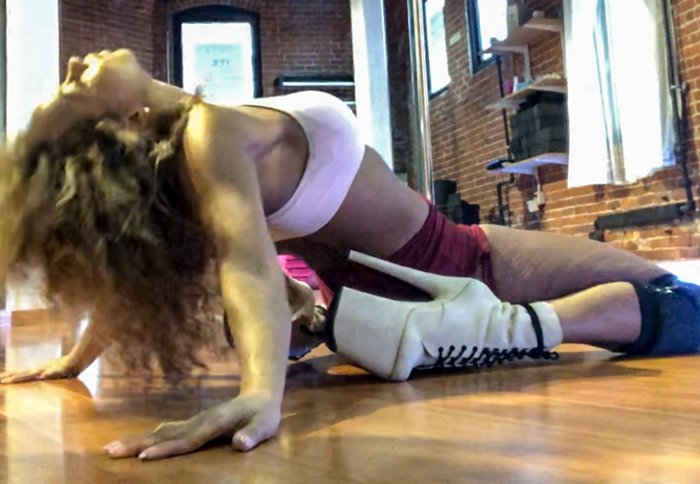
Whatever the trick, there will be a learning curve if you're not used to wearing high heels. And even those who wear heels see value in barefoot practice, as well.
"Even now, I learn most skills in bare feet before attempting them in heels," Solomon says.
The bottom line: You don't need to wear Pleasers to be a pole athlete, and you don't need them to get started. You may never need them. And in most cases, you're going to learn the basics barefoot first.
How to Get Started in Pole Fitness
"Just do it," says the Southern California-based Grishina, who will come out of retirement to return to the Fitness Olympia in 2020. She also advises that you find an instructor, especially in the early going. The Internet is awash in pole-dancing videos and instruction—all terrific motivation—but this is not a skill you can reliably teach yourself. Grishina admits she tried—and ended up frustrated—before finding a local studio.
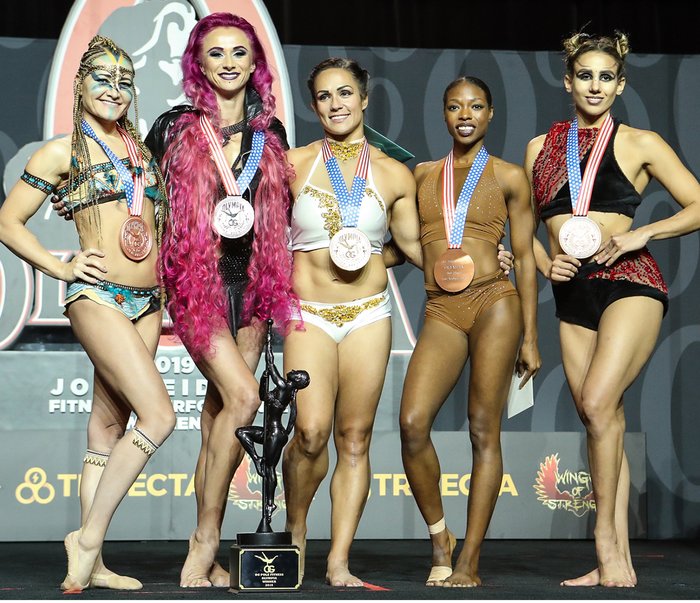
While there's no central listing of pole studios or competitive organizations, an internet search turns up endless listings, and most areas will have a gym or dance studio that features pole fitness or other forms of aerial gymnastics like silks, trapeze, and hoops. At least one major health club chain, Crunch, offers pole classes at many of its clubs.
If you're lucky enough to have your choice of studios, consider the variety of classes and pole styles offered as well as the instructors.
"Once you take your first few classes, the first thing to determine is whether you want to pursue this as just a fun hobby or take it a bit more seriously," Cumberbatch advises. "If you take pole more seriously, it is extremely important that your instructors have the experience necessary to help you perform more advanced tricks. You do not want to risk an injury in the hands of someone who doesn't know what they are doing!"
Tips for Your First Pole Class
Solomon offers some practical advice for beginning your journey on the pole.
- Bring shorts, a sports bra, and a tank top. You may also want to bring leg warmers, in case it's cold in the studio.
- Do not wear lotion on your body because this will prevent your skin from sticking to the pole.
- Purchase a gripping lotion like Dry Hands to help you grip the pole, especially if you have sweaty hands, as well as knee pads to protect your knees during floorwork.
- Leave your jewelry at home!
- You may experience serious delayed-onset muscle soreness after your first class, as well as a few "pole burns." When your skin makes contact with the pole during sits and climbs, it can leave a temporary reddish mark or a bruise. Consider yourself warned.
- Be prepared for special kind of "pain in muscles that you didn't know you had" feeling, but also a tremendous sense of accomplishment.
Exercises to Help You Get Better at Pole Fitness
Like any athletic undertaking, a little assistance work can pay off immensely in pole. Core strength and stability are key to this demanding form of fitness. Exercises like planks, pull-ups, push-ups, and dips will help get your body ready for pole, along with whole-body resistance training.
Solomon recommends Pilates in particular. "My favorite Pilates exercises include the saw, scissors, seal, and teaser prep," she says. "I recommend building strength in the lats, pecs, and teres majors throughout your active range of motion. This will help keep your shoulder joints healthy. Shoulder injuries can happen if you are compensating with incorrect muscles, such as the upper traps. I like to activate these muscles with isometric holds. You can do isometric holds in the pec-deck, chest press, horizontal rowing and lat pull-down machines at your commercial gym."
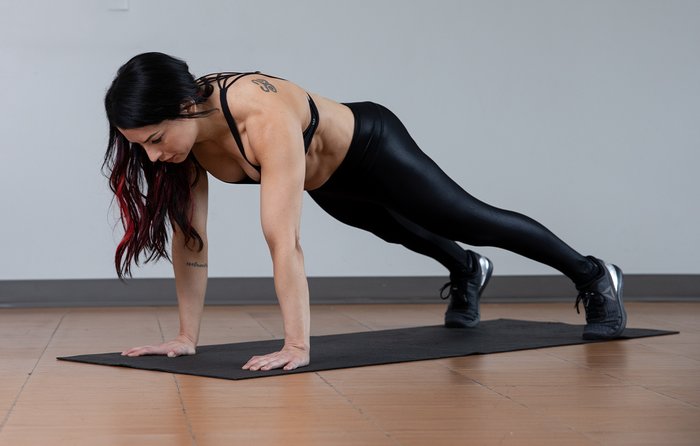
Pole Competition: The Next Level of Pole Fitness
Competitive pole dancing or pole fitness is a test of skill and artistry, with choreographed routines, compulsory moves, and a judging system based on execution, artistry, and degree of difficulty. Typically, the athletes move between two poles, one static and one spinning, transitioning with floorwork and dance.
There are as many types of competitions as there are styles of pole work. The United States Pole Dance Federation (USPDF) is credited as the oldest pole dancing organization, but there are several more to choose from, including the Pole Championships Series, which holds its world championship at the Arnold Sports Festival, and the OG Pole Classic, produced by Grishina at the IFBB Olympia Weekend.
In addition, the International Pole Sports Federation, which calls itself the "governing body of pole sports," has a focus on standardizing competition and getting pole sports into the Olympics, a lengthy and complicated process. In 2017, pole was granted Observer Status by the Global Association of International Sports Federation, considered a first step in gaining membership in that organization and, eventually, getting into the Olympic program.
Your pole studio may have connections to one or more competition organizations, and again, an internet search for "pole competitions" is your best research source.
Here are links to just a few of the organizations offering opportunities to compete in pole sports.
- United States Pole Dance Federation (USPDF)
- International Pole Sports Federation (IPSF)
- Pole Sports Organization (PSO)
- Pole Championship Series (PCS)
- OG Pole Fitness Classic
- International Pole Dance Fitness Association (IPDFA)
References
- Nicholas, J.C., McDonald, K.A. et al. (2019). Pole dancing for fitness: the physiological and metabolic demand of a 60-minute class. Journal of Strength and Conditioning Research, 33(10), 2704-2710.
